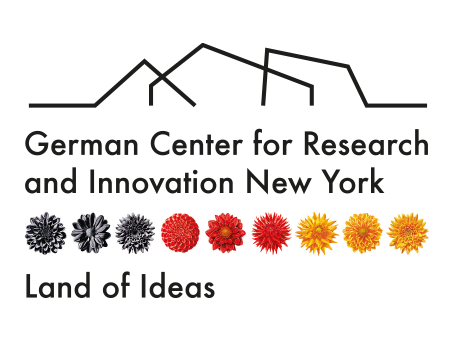Redefining “Going Viral”

Look back at a year of vaccine news and check out the difference between press coverage on the pandemic in Germany and the U.S.
“The world is waiting for a breakthrough vaccine against COVID-19.” So began our first coverage of the COVID-19 pandemic in an article published March 31, 2020.
The news that BioNTech had partnered with Pfizer to produce a vaccine was two weeks old then. CureVac, another German biotech, was also in the vaccine race. Let’s take a look back at the past year, get the latest updates and explore some takeaways.
mRNA Vaccines Brought to the Forefront of Discussion
Before the COVID-19 pandemic, a vaccine that used messenger RNA had never been on the market. mRNA vaccines are not brand new, however.
Back in 2017 CureVac published the results of a phase 1 clinical trial for an mRNA-based rabies vaccine. And in 2019, Moderna and German researchers published the phase I results of two mRNA vaccines against influenza.
The COVID crisis presented an unparalleled opportunity to rapidly speed up the development and deployment of mRNA vaccines. In fact, the pandemic demanded it. mRNA vaccines are much faster to develop than traditional vaccine methods because they can be developed in a laboratory using readily available materials.
To move quickly to stop the global crisis, CureVac, BioNTech and Moderna immediately began developing mRNA vaccines against SARS-CoV-2. Early trials of the vaccines showed efficacy rates far exceeding either expectations or previous vaccine methods.
Learn the long, winding story of mRNA vaccine science in our April feature article.
German and American Vaccine Responses Compared
It took BioNTech and Pfizer nine months to receive emergency use authorization. As of April 30, the U.S. has vaccinated 43.2% of citizens with at least one dose of a COVID-19 vaccine, while Germany has vaccinated 23.9%.
Critics online like here and here have pointed out that German public discourse on the pandemic mostly centers around lockdowns and other policy measures in comparison to American discourse which discusses vaccination campaigns.
Using the news analytics tool NewsWhip, we analyzed interaction on web articles published between February 1 and April 30 to find the five most liked, shared and commented articles related to the pandemic in Germany in the U.S. Here are the results.
Germany:
- Deutscher Mediziner entwickelt Corona-Antigen – und wird vom Staat angezeigt (German physician develops corona antigen – and faces legal action by the state): 145.2k interactions
- Christoph Waltz über Corona-Leugner –»Eine Gruppe von asozialen Vollidioten« (Christoph Waltz on Corona Deniers – “A Group of Anti-Social Morons”): 104.6k interactions
- Pandemie schneller vorbei als gedacht? WHO-Experte sagt baldiges Corona-Ende voraus (Pandemic over sooner than expected? WHO expert predicts end of Corona soon): 99.2k interactions
- Sascha Lobo über Staatsversagen in der Pandemie—Sätze zum Ausflippen (Sascha Lobo on state failure in the pandemic: sentences to freak out about): 93.7k interactions
- Arbeitgeber von Spahns Ehemann verkaufte Masken ans Gesundheitsministerium (Employer of Spahn’s husband sold masks to health ministry): 88.6k interactions
US:
- The Second COVID-19 Shot Is a Rude Reawakening for Immune Cells: 2.04m interactions
- Captain Sir Tom Moore: ‘National inspiration’ dies with Covid-19: 1.42m interactions
- No cold chain, no immunization: UNICEF’s efforts to strengthen Nepal’s cold chain capacity: 1.16m interactions
- Cuomo aide Melissa DeRosa admits they hid nursing home data so feds wouldn’t find out: 962.7k interactions
- A SPRINT during the pandemic to stop pneumonia: 958.1k interactions
Getting populations vaccinated still requires overcoming hurdles including misinformation, vaccine hesitancy and variants that lessen vaccine effectiveness. Despite these hurdles, the situations in the U.S. and Germany seem to be turning an optimistic corner. New guidelines from the Centers for Disease Control lightened the restrictions of mask wearing outdoors for vaccinated adults except in crowds.
But What Happened with CureVac?
In a story with all the dramatic flair of a Netflix drama, CureVac has still yet to release a vaccine to market. After it was reported in March 2020 that then U.S. President Donald Trump was trying to secure CureVac’s vaccine development exclusively for the U.S., Daniel Menichella, CureVac’s CEO, was replaced by Board Chair Ingmar Hoerr. Executives close to CureVac deny the Trump story.
Five days after he took office, Ingmar Hoerr suffered a brain hemorrhage in his hotel room. He was placed on temporary leave and replaced again by Franz-Werner Haas.
Curevac’s vaccine is still forthcoming. It was reported in early April that CureVac was recruiting participants for its Phase 3 clinical trial. Its release could still substantially aid global efforts to end the pandemic. While the Pfizer/BioNTech vaccine must be stored at -70 degrees Celsius, the CureVac vaccine remains stable even at room temperature for at least 24 hours.
Takeaways
From this writer’s perspective, here are some key takeaways from the past year’s vaccine and COVID-related developments:
- A number of important scientific advances have happened thanks to the global response to the COVID-19 pandemic. The successes and failures of the COVID-19 response will leave a lasting impact on global health.
- Innovation is still happening. The pandemic story is certainly not written by just the four vaccines available right now.
- Though initially a power struggle between governments and between the public and private sectors, development now seems to see more advancement and maybe even collaboration.
